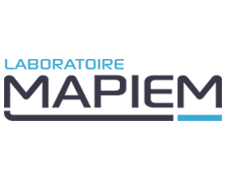Acrylic-kaolinite composite hydrogels for controlled-release nitrogen fertilizers application
Hydrogels composites acrylique-kaolinite pour une libération contrôlée de fertilisants azotés
Résumé
This thesis is part of the development of new granular fertilizers that can be used in agriculture and that combine a slow release of organic nitrogen fertilizer and a high water absorption and retention capacity. Urea was first incorporated into acrylic superabsorbent hydrogels by two methods, either by incorporation during polymerization or by a post-loading step with the preformed polymer. The first method leads to a more homogeneous polymer network with reduced pore sizes and leading at the same time to a slow release of the fertilizer and to excellent water retention capacity under pressure and swelling/reswelling capacity. Kaolinite-urea intercalates were prepared in a second part of this work by dry grinding kaolin KGa-1b with urea using a laboratory-scale planetary ball mill. A degree of intercalation close to 100% with very little amorphization of the kaolinite was obtained by grinding KGa-1b with a small excess of urea for only 15 minutes. The slow release of urea from composites consisting of a poly (acrylic acid-co-acrylamide) matrix and kaolinite-urea intercalates is linked to the coating of the kaolinite-urea complex in the hydrogel matrix as well as at the location of the urea in the interlayer space of the kaolinite. In a final part, polyacrylamide-kaolinite hydrogels were prepared in the absence of organic crosslinking agent and at room temperature. The polymerization of acrylamide is initiated at the surface of the kaolinite previously functionalized with 2- (2-dimethylaminoethoxy) ethanol. The grafting reaction was studied by X-ray diffraction, thermogravimetric analysis, IRTF spectrometry, 13C NMR and elemental analysis. The XRD results revealed an expansion of the interlayer during polymerization with a low stacking order and partial exfoliation of kaolinite. Kaolin acts as a multifunctional crosslinking agent in this composite. The polyacrylamide-kaolinite composites showed good elastic recovery properties and a high swelling capacity.
Cette thèse s’inscrit dans la mise au point de nouveaux fertilisants granulaires utilisables en agriculture et combinant une libération lente de fertilisant azoté organique et une capacité d’absorption et de rétention d’eau élevée. L’urée a été intégrée dans des hydrogels superabsorbants acryliques selon deux méthodes, soit par incorporation lors de la polymérisation, soit lors d’une étape de post-chargement du polymère préformé. La 1ère méthode conduit à un réseau polymère plus homogène avec des tailles de pores réduites et conduisant à la fois à une libération lente du fertilisant à une capacité de rétention d'eau sous pression élevée et à d’excellentes propriétés de gonflement/regonflement. Dans une seconde partie de ce travail, des intercalats kaolinite-urée ont été préparés par broyage à sec de kaolin KGa-1b avec de l'urée à l'aide d'un broyeur planétaire à billes. Un degré d’intercalation proche de 100% avec très peu d'amorphisation de la kaolinite a été obtenu en broyant Kga1b avec un faible excès d'urée pendant seulement 15 minutes. La libération lente de l’urée de composites constitués d’une matrice poly(acide acrylique-co-acrylamide) et d’intercalats kaolinite-urée est liée à l'enrobage du complexe kaolinite-urée dans la matrice d'hydrogel ainsi qu'à l'emplacement de l'urée dans l'espace interfoliaire de la kaolinite. Dans une dernière partie, des hydrogels polyacrylamide-kaolinite ont été préparé en l’absence d’agent réticulant organique et à température ambiante. La polymérisation de l’acrylamide est amorcée à la surface de la kaolinite préalablement fonctionnalisée avec le 2-(2-diméthylaminoéthoxy)éthanol. La réaction de greffage a été étudiée par diffraction des rayons X, analyse thermogravimétrique, spectrométrie IRTF, RMN du 13C et analyse élémentaire. Les résultats de diffraction des rayons X ont révélé une expansion de l'espace interfoliaire lors de la polymérisation avec un ordre d'empilement faible et une exfoliation partielle de la kaolinite. Le kaolin joue le rôle de réticulant multifonctionnel dans ce composite qui présente de bonnes propriétés élastiques et un taux de gonflement élevé.
Domaines
Chimie
Fichier principal
 2021_ELHADJ_YACOUB_Mahamat_Saleh_2021TOUL0023.pdf (5.78 Mo)
Télécharger le fichier
2021_ELHADJ_YACOUB_Mahamat_Saleh_2021TOUL0023.pdf (5.78 Mo)
Télécharger le fichier
| Origine | Version validée par le jury (STAR) |
|---|

